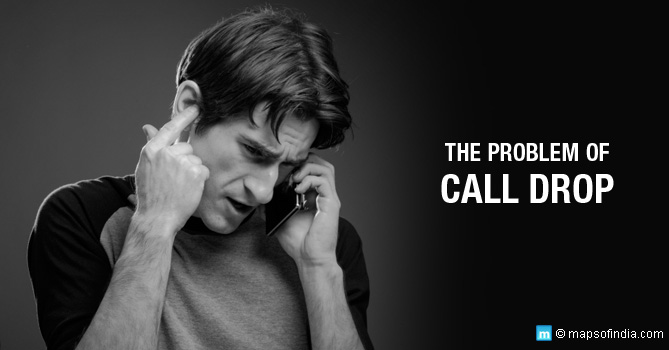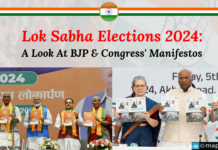Digital India, to help transform the nation into a force to reckon with, and creating opportunities for all citizens by harnessing digital technologies, has been the vision of our Prime Minister Narendra Modi. However, this vision has found an obstacle in the form of the call dropping menace in India. Be it the common man or the Prime Minister himself, everyone in India is facing the same problem of call dropping.
What is Call Dropping?
Dropped Call Rate (DCR) is a fraction of the calls which get disconnected midway in a conversation, or where the speakers at the two ends cannot hear each other. This fraction is measured as a percentage of all calls made in a specific period of time. The dire problem of call dropping in India has come to light with the percentage as high as 15%. The Telecom Regulatory Authority of India (TRAI) has a benchmark for call drops as less than or equal to 3%. Aircel, Vodafone, BSNL and MTS are the service providers with the worst percentage of call drops.
Problems because of Call Dropping
The problems that everyone is facing due to cell phone call drops are as follows:
• Data is moving at snail’s pace.
• Bad connectivity will certainly hamper financial inclusion.
• Private sectors which rely on connectivity to deliver services are already facing problems.
• There are even allegations that private telecom companies are taking the country for a ride.
The reason behind Call Drop as per the Telecom companies
• Low availability of spectrum is one of the major reasons for call drops. Telecom operators send and receive signals at various frequencies to enable communication. These signals are sent through an electromagnetic field called the spectrum.
• The number of cell phone users has increased by leaps and bounds, but the cell phone towers and availability of spectrum has not increased in the same proportion. This has led to congestion.
• Radiation from cell phone towers and the consequent possibility of health hazards has forced the telecom companies to pull down 10,000 towers.
• While 70,000 cell towers have been installed in the past year, another lakh need to be installed to solve the call drop problem. The cost of the installation of these towers is borne by the telecom companies.
• Apart from the cost of installing the towers, the telecom companies also have to bear the cost of rentals. There is a proposal thus to install the new towers on government buildings rent free.
The government’s stand
As per telecom Minister Ravi Shankar Prasad, there is ample spectrum available for the operators. It is the responsibility of the telecom companies to upgrade their network to make optimum use of the available spectrum. The Government feels that the telecom companies are making excuses to opt out of investing a large amount of capital in upgrading their network, as well as installing new cell phone towers. While the telecom companies claimed to have removed 10000 towers in the last one year because of a campaign of the ill-effects of mobile tower radiation, the telecom Minister has categorically said that telecom towers are not health hazards, and activism to have them removed from residential neighbourhoods is unwarranted. In his words, “There is an exhaustive World Health Organisation report on the matter that this radiation is not injurious to health. One should only think of the radiation that one is normally exposed in doing X-rays or MRIs.”
He has further said that “Spectrum has been given (with clearing of spectrum sharing and trading). Don’t now give the impression that you only want to collect customers and give no thought to good services. Operators should optimise their network, synchronise the network and also invest in the network.”
The telecom Minister went on to address the situation of call drops as a National Problem, and while promising a proactive status of the government in this regard, urged the telecom companies to find a solution to this problem and take appropriate remedial measures.
In August, 2015, Prime Minister Narendra Modi intervened, and directed officials to initiate urgent steps to resolve the problem of call drops. As per an official statement, “The Prime Minister expressed serious concern over the issue of ‘call drops’ and asked officials what steps were being taken to address this problem, which, he said, directly affects the common man. He directed that steps be taken urgently to resolve the problem, and to ensure that problems in voice connectivity do not extend to data connectivity in the future.” The Prime Minister has suggested that different options like the possibility of leveraging existing resources, including Railway and other communication infrastructure, to provide connectivity in remote and unconnected areas, should also be explored.
The problem to be resolved soon
Some of the promoters of telecom companies such as Kumar Mangalam Birla, chairman of Idea Cellular, Sunil Mittal, chairman of Bharti Airtel and Anil Ambani, chairman of Reliance Communications have assured the government that call drops would reduce within 30-45 days. The Cabinet also recently approved spectrum trading guidelines. As per these guidelines, operators who have fewer subscribers will be allowed to loan or rent out their unutilised airwaves to larger players. This will help in addressing the problem of spectrum shortage and thus resolve the issue of call drops. The telecom Minister making the Government proactive in this issue has also asked local municipal bodies across the country to reduce tariffs for installing towers and written to state governments to facilitate the process of setting up towers.
Conclusion
The vision of Digital India will remain incomplete as long as connectivity issues are not resolved. With the Government doing its bit in improving the situation, the ball is now in the court of the telecom companies, where they have to take necessary steps, like installing new towers and upgrading their network, to address the issue. Till then the good old, old fashioned landlines are back in service.




